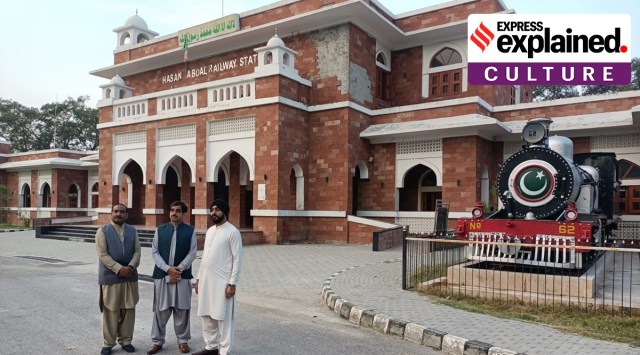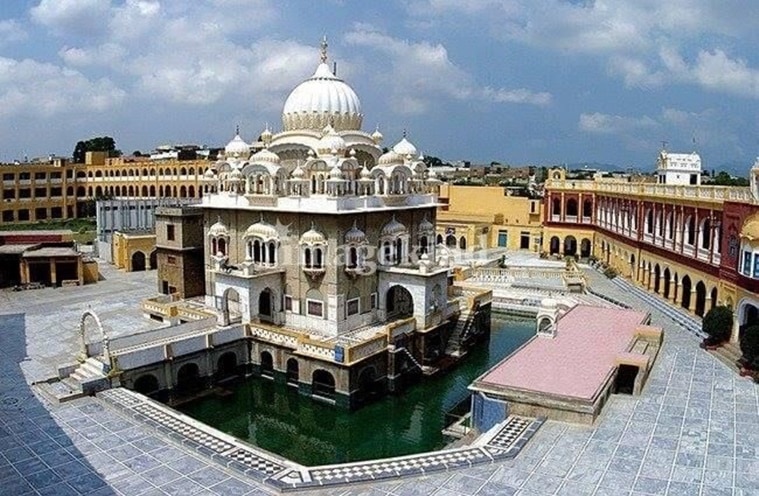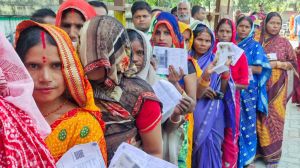Divya Goyal is a Principal Correspondent with The Indian Express, based in Punjab. Her interest lies in exploring both news and feature stories, with an effort to reflect human interest at the heart of each piece. She writes on gender issues, education, politics, Sikh diaspora, heritage, the Partition among other subjects. She has also extensively covered issues of minority communities in Pakistan and Afghanistan. She also explores the legacy of India's partition and distinct stories from both West and East Punjab. She is a gold medalist from the Indian Institute of Mass Communication (IIMC), Delhi, the most revered government institute for media studies in India, from where she pursued English Journalism (Print). Her research work on “Role of micro-blogging platform Twitter in content generation in newspapers” had won accolades at IIMC. She had started her career in print journalism with Hindustan Times before switching to The Indian Express in 2012. Her investigative report in 2019 on gender disparity while treating women drug addicts in Punjab won her the Laadli Media Award for Gender Sensitivity in 2020. She won another Laadli for her ground report on the struggle of two girls who ride a boat to reach their school in the border village of Punjab. ... Read More
100 years of Saka Panja Sahib: Why a railway station in Pakistan holds significance in Sikh history
On October 30, 1922, two Sikhs died and several other protesters were injured at Hasan Abdal railway station.
 Hasan Abdal railway station in Attock district of Punjab province, Pakistan. (Express photo)
Hasan Abdal railway station in Attock district of Punjab province, Pakistan. (Express photo)
The gurdwara management bodies from both sides of the border — Amritsar-based Shiromani Gurdwara Parbandhak Committee (SGPC) and Pakistan Sikh Gurdwara Parbandhak Committee (PSGPC) — will jointly observe the centenary of Shaheedi Saka Panja Sahib (martyrdom massacre), at Hasan Abdal city of Attock district, Punjab province of Pakistan.
The main commemoration event will be held at Gurdwara Sri Panja Sahib on October 30. However, a day before, on October 29, Gurbani kirtan will also be held near rail tracks at Hasan Abdal railway station.
What happened 100 years ago and why does this railway station in Pakistan hold immense significance in Sikh history? The Indian Express explains.
What is Saka Panja Sahib?
On October 30, 1922 two Sikhs died and several other Sikh protesters, including women, were injured at Hasan Abdal railway station after the railway authorities under the then-British government refused to stop the train ferrying Sikh prisoners from Amritsar to Attock.
The Sikhs from nearby Panja Sahib wanted to serve langar (community kitchen food) to the Sikh prisoners but were told by the station master at Hasan Abdal station that the train would not stop at the station. In protest, the Sikhs squatted on the railway tracks and as the train approached, the Sikhs, who were determined to halt the train, continued to stay put, demanding their right to serve langar to the Sikh prisoners.
 Gurdwara Panja Sahib, Pakistan. (Express photo)
Gurdwara Panja Sahib, Pakistan. (Express photo)
The train finally came to a screeching halt, but only after crushing many of Sikh protesters — of whom Bhai Karam Singh and Bhai Partap Singh died after sustaining serious injuries. Since then, both Sikhs are hailed as martyrs of Saka Panja Sahib who sacrificed their lives fighting for rights of Sikhs against the British.
Who were the Sikh prisoners in the train?
The roots of Hasan Abdal rail massacre lie in another Sikh movement against the British — Guru Ka Bagh Morcha of Amritsar. Hundreds of Sikhs were arrested by the British after they had launched a peaceful agitation against the arrest of five Sikhs who had axed trees from the land of Gurdwara Guru Ka Bagh to use as wood for cooking langar in August 1922. However, the British accused them of stealing wood from gurdwara land and arrested them.
Gurudwara Guru Ka Bagh, Amritsar, was not under the direct control of SGPC and its administration was in the hands of Mahant Sundar Das. He considered the Gurudwara and its 524 kanals of land to be his personal property and had the support of the British government.
On August 8, 1922, five Sikhs axed trees on the land of Gurudwara Guru Ka Bagh to use wood for preparing langar. The British government arrested them for allegedly stealing wood from the land as Sundar Das claimed he was the legal cultivator.
The protest against the arrest of five Sikhs led to the launch of a massive agitation known as “Guru Ka Bagh Morcha” and the SGPC started sending Sikhs on a daily basis for voluntary arrests.
Police started formally arresting the protesters on August 22, 1922. The British also started inflicting atrocities on protesters and thrashed them mercilessly. The SGPC set up a temporary hospital for the injured near the Guru Ka Bagh Morcha site.
Sikhs would offer langar to prisoners at railway stations. One such train carrying protesters of Guru Ka Bagh Morcha had left Amritsar on October 29, 1922 and was scheduled to reach Attock the next morning via Hasan Abdal. However, when Sikhs from Panja Sahib reached there with food to feed the prisoners, they were told the train wouldn’t stop, thus leading to protest on railway tracks and death of two Sikhs at Hasan Abdal station, known as Saka Panja Sahib.
Gurdwara Panja Sahib: Guru Nanak’s visit
The history of the shrine Gurdwara Panja Sahib, in Hasan Abdal of Pakistan, is far older than the Saka Panja Sahib incident. The gurdwara was built on the site believed to be visited by Sikhism’s founder Guru Nanak Dev, along with his companion Bhai Mardana.
“It is believed that a local saint Wali Qandhari was rude towards Nanak and refused to give water to Bhai Mardana who was extremely thirsty, from a natural fountain near his dera. He also threw a boulder towards Nanak, but Nanak stopped it with his panja (hand) and a spring of water appeared there miraculously. The boulder with Nanak’s handprint is still there. Later Maharaja Ranjit Singh and his general Hari Singh Nalwa got the gurdwara building constructed to commemorate Nanak’s visit,” says Paramvir Singh, professor and head, department of encyclopaedia of Sikhism, Punjabi University, Patiala.
“Gurdwara Panja Sahib is of extreme importance because of the visit of Guru Nanak and Bhai Mardana. The Saka Panja Sahib which happened later in 1922 was a watershed moment in Sikh history which made the British realize that Sikhs cannot be suppressed in the fight for the right over their gurdwaras and Guru’s langar. Karam Singh and Partap Singh laid down their lives fighting for the right to serve langar to their Sikh brothers who wanted to free gurdwaras from control of wicked mahants (priests who controlled gurdwaras in connivance with the British). It was only after the Sikhs fought a long battle that gurdwaras were freed from mahants and British,” he added.
100 years later, the joint commemoration, but marred with controversy
Even as the SGPC and PSGPC have come together to mark 100 years of Saka Panja Sahib, controversy has erupted even before the commencement of two-day event in Pakistan. The SGPC has alleged that Pakistan has rejected visas of at least 40 of Indian pilgrims who were scheduled to leave for Pakistan on October 28, including some members of the SGPC and veteran granthis, kavishers, raagis, dhadhis and preachers (Sikh religious ballad singers and priests).
According to Amir Hashmi, spokesperson of the Evacuee Trust Property Board (ETPB), Pakistan, over 3000 Sikh pilgrims including 355 from India and others from the UK, US, Canada are expected to attend Saka Panja Sahib centenary event. “They are scheduled to arrive via Wagah border on October 28 and depart on November 2. The main event will be held at the gurdwara on October 30 and the one at railway station on October 29,” he said.
However, uncertainty prevails over SGPC jatha crossing over to Pakistan on Friday (October 28). “Of our proposed jatha comprising 157 pilgrims, visas of 40 have been rejected. It is still uncertain if jatha from our side will go to Pakistan tomorrow or not as they are yet to clear all visas. Ballad singers, raagis etc can’t perform kirtan even if one of their group members is missing,” said Harbhajan Singh, media coordinator of the SGPC.



- 01
- 02
- 03
- 04
- 05




































